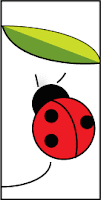
(click on quote for his website)
I thought this essay was quite interesting. I liked the author's link of the history of modern design and today's marketplace of everyday good design. I think more than ever clever design that marries with function can be found in the kitchen gadget isle in Target to the selection of desk lamps at Pottery Barn. The idea of form meets function (a timeless concept in general) not only as making good design sense, but it now makes good business sense as a consuming public is more and more education on design and is willing to pay for it. I know for myself I did indeed buy that cute little broom and dustpan from the photo posted of Michael Graves work for Target. Why? Well, as a consumer with an aesthetic eye, why not sweep up the crumbs plus have a little broom that fits together with the dustpan in such a delightful way?I found this passage relevant: "...one can trace this evolution from the early Russian Constructivists' belief in a universal language of form that could transcend class and social differences." The idea of good design for the people. How fascinating in our capitalist society that concept would live on.










